
Tabanus glaucopis, also known as the downland horsefly, is a species of biting horse-fly.

Tabanus maculicornis also known as the narrow-winged horsefly is a species of biting horse-fly.
Tabanus spodopterus also known as the black horned giant horsefly is a species of biting horse-fly. It is widespread in Europe, but only one doubtful specimen has been found in the United Kingdom.

Osca lata, the coliguacho or black horse fly, is a large horse fly whose range includes southern Chile and southern Argentina. The fly has a striking reddish-orange coloration on the side of its thorax and abdomen. It is generally around 2 cm. in adult size.

Haematopota pluvialis, the common horse fly or notch-horned cleg fly, or simply cleg in Scotland and northern parts of Ireland, is a species belonging to the family Tabanidae subfamily Tabaninae.

Chrysops caecutiens, common name splayed deer fly, is a species of horse fly belonging to the family Tabanidae. It is also known by the colloquial name Scotch Cleg.

Hybomitra aterrima is a species of horse flies in the family Tabanidae.

Philipomyia is a genus of horse fly belonging to the family Tabanidae subfamily Tabaninae.

Tabanus quatuornotatus is a species of biting horse-fly.
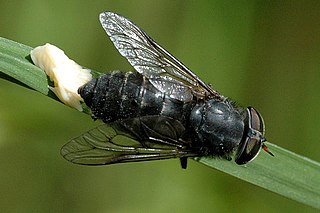
Hybomitra micans is a species of horse flies in the family Tabanidae.
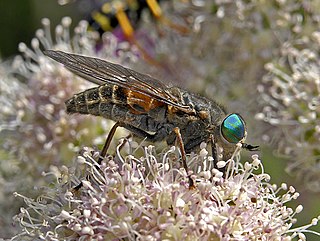
Hybomitra montana, the slender-horned horsefly, is a species of horse flies in the family Tabanidae.
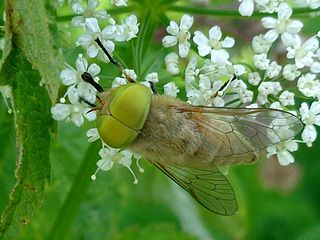
Atylotus fulvus is a species of 'horse flies' belonging to the family Tabanidae.
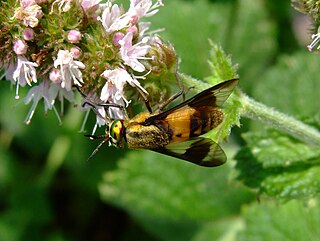
Chrysops viduatus is a species of 'horse flies' belonging to the family Tabanidae.

Therioplectes gigas is horse fly in the family Tabanidae. The species was first described by Johann Friedrich Wilhelm Herbst in 1787.

Chrysopsinae is a subfamily of deer flies in the family Tabanidae.
Hybomitra solstitialis is a Palearctic species of horse fly in the family Tabanidae. Continental authorities apply the name solstitialis to the coastal species Hybomitra ciureai of British authorities and regard British solstitialis as var. collini of Hybomitra bimaculata.
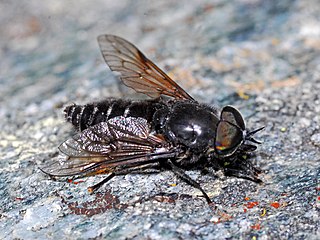
Dasyrhamphis umbrinus is a species of horse fly, a fly in the family Tabanidae, native to Europe and near East Asia.

Hybomitra caucasica is a species of horse flies in the family Tabanidae.

Chrysopsini is a tribe of horse and deer flies in the family Tabanidae.
Hybomitra auripila is a Palearctic species of horse fly in the family Tabanidae.



















